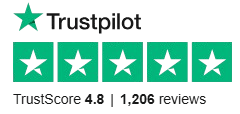
Differences Between Secured And Unsecured Loans
Deciphering Secured vs. Unsecured Business Loans: What UK SMEs Need to Know Navigating the business loans market in the UK can often feel like solving…
We have partnered with Funding Options so you can compare over 120 lenders to find the right finance partner for you.

Some of the lenders compared….
At Simply Business Loans we have partnered with Funding Options to bring you access to over 120+ lenders. Funding Options provides you with one simple application process that delivers uniquely tailored loan solutions for your business. Their technology, Funding Cloud, will accurately validate your business profile, matching you to the industry’s largest lender network.
Start with how much you need to borrow, what it’s for, and basic information about your business.
Smart technology at Funding Options will compare up to 120+ lenders and match you with matched finance options
Help is provided to you during application process to receiving your funds. It’s free to apply and it doesn’t affect your credit score
Invoice factoring is a form of invoice financing that helps businesses unlock cash flow by using their unpaid invoices as collateral. This option is particularly useful for companies that need to access immediate funding to cover operating costs, pay suppliers, or invest in growth. Invoice factoring is one of several types of invoice financing, each offering distinct features. This guide will explain invoice factoring, who it suits, and how it compares to other financing options like invoice discounting and selective invoice finance.
Invoice factoring is a financing solution where a business sells its unpaid invoices to a third-party provider, known as the factor. In exchange, the business receives an immediate cash advance, usually between 80% and 90% of the invoice value. The factor then takes on the responsibility of managing the sales ledger and collecting payments from the business’s customers. Once the customer pays the invoice, the business receives the remaining balance, minus the factor’s fees.
This method allows businesses to quickly access cash, rather than waiting for customers to pay their invoices, which can take anywhere from 30 to 90 days. The upfront funds can be used to cover any business expenses, ensuring smoother cash flow and reducing the need for traditional loans or credit lines.
The Business Issues an Invoice: The business provides goods or services to a customer and issues an invoice.
The Invoice is Sold to the Factor: Instead of waiting for the customer to pay, the business sells the invoice to the factoring company.
The Factor Provides an Advance: The factoring provider gives the business an upfront percentage of the invoice value (typically 80%–90%).
The Factor Manages Collection: The factor takes on the responsibility of collecting payment from the customer.
Final Payment is Settled: Once the customer settles the invoice, the business receives the remaining balance minus the factoring fees.
Invoice factoring is ideal for businesses that have a large volume of outstanding invoices but are struggling with cash flow gaps. It’s especially useful for businesses that do not have access to traditional forms of financing, such as bank loans, or for those that need faster access to cash.
This option works well for businesses that are comfortable with outsourcing their credit control function. Since the factoring provider manages customer payments, this is a good choice for companies that prefer to focus on their operations without handling collections themselves.
Improved Cash Flow: Invoice factoring offers immediate access to cash that can be used to cover operational expenses or business investments.
Outsourced Credit Control: The factor takes care of managing the sales ledger and chasing overdue invoices, saving time and resources.
No Additional Debt: Unlike loans, invoice factoring is not a form of borrowing, so it doesn’t add to the business’s debt burden.
Flexibility: As sales grow, businesses can factor more invoices to unlock additional funds.
Cost: Invoice factoring fees can vary depending on the volume of invoices and the financial stability of the business’s customers. These fees might be higher than traditional lending.
Customer Relationship: The factor is responsible for collecting payments, which could impact the relationship between the business and its customers. Businesses need to ensure they select a provider who manages collections professionally.
Dependence on Customer Payments: If customers fail to pay their invoices on time, the business may face issues with the financing provider and could be required to repay the advance.
While invoice factoring is a popular choice, other types of invoice financing might suit different business needs:
Invoice Discounting: In contrast to factoring, invoice discounting allows businesses to retain control of their sales ledger and manage collections directly. The business still receives an advance on the invoices but is responsible for collecting payments. This option is ideal for businesses with a strong credit control system and those who want to keep the financing arrangement confidential from their customers.
Selective Invoice Finance: Selective invoice finance allows businesses to choose specific invoices to finance rather than factoring all outstanding invoices. This option offers more flexibility, making it suitable for businesses that don’t want to factor every invoice but still need short-term funding.
Invoice factoring is an effective cash flow solution for businesses that need immediate access to funds and are comfortable outsourcing the management of their invoices. However, it is important for business owners to carefully consider the associated costs and how the factor will interact with their customers. For businesses that prefer to retain control over their credit management, invoice discounting or selective invoice finance might be more suitable alternatives. Each option has its own advantages and considerations, so understanding the differences can help business owners choose the best option for their specific needs.

Deciphering Secured vs. Unsecured Business Loans: What UK SMEs Need to Know Navigating the business loans market in the UK can often feel like solving…

Navigating the Landscape of UK Business Loans: What You Need to Know As the backbone of the British economy, small to medium-sized enterprises (SMEs) are…

The Key Takeaways The 2024 UK budget was announced on October 30th 2024. It is the first budget of the Labour government in 14 years.…
About This Information
Our articles, guides & reviews are provided as generic information only. Any expressed view, product or service mentioned within these does not constitute as financial advice or recommendation by us.
Be mindful that information may have changed since publication.